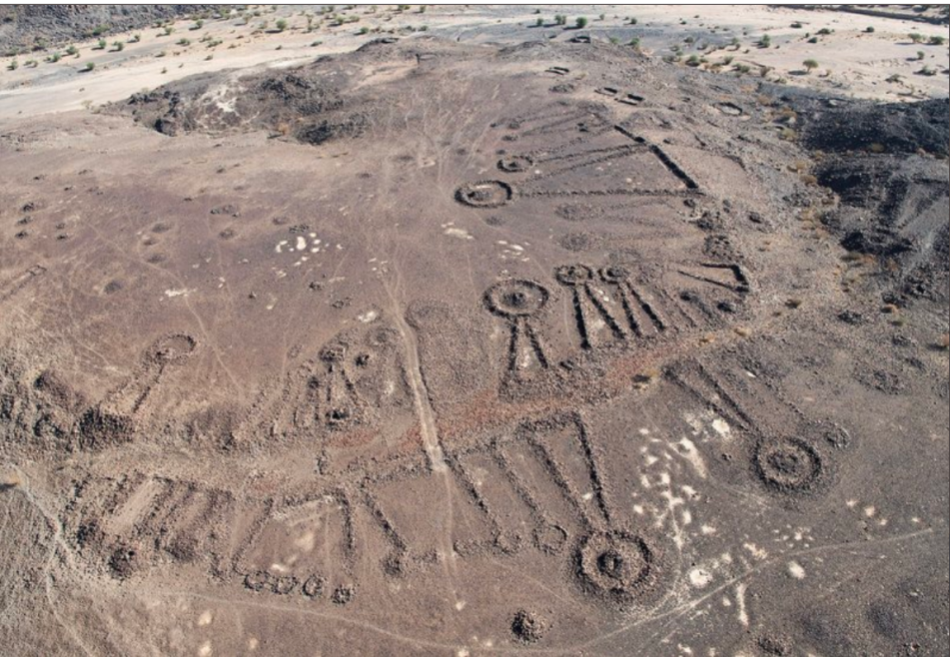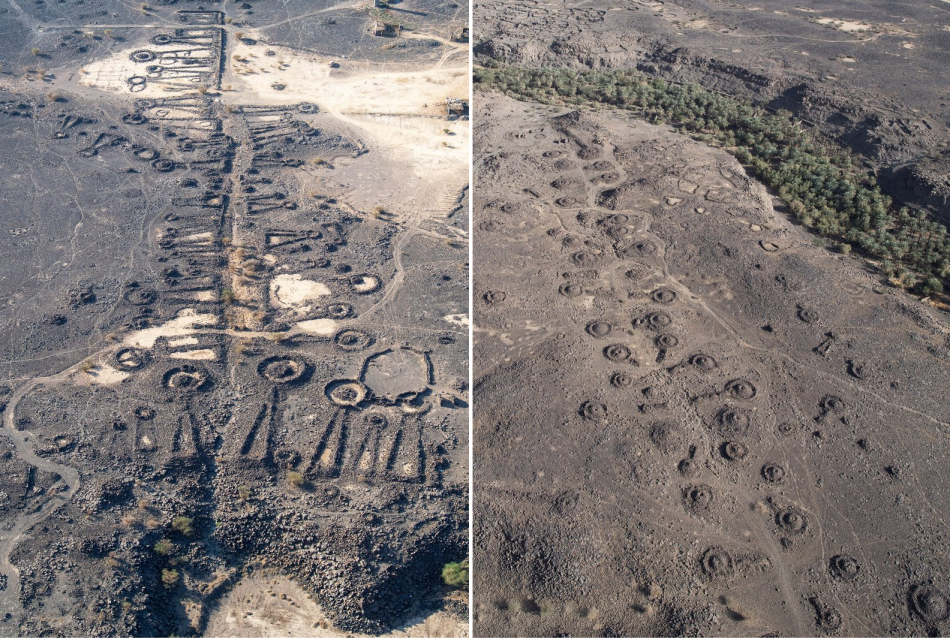An amazing discovery... a 4,500-year-old road network in northern Saudi Arabia


The Royal Commission for AlUla Governorate, in cooperation with the University of Western Australia (UWA), revealed it. The roads and corridors surrounded by thousands of burial monuments link the oases and pastures in the northwest of Saudi Arabia, which indicates a high degree of social and economic link between the population of the region in the third millennium BC.
These findings were published in The Holocene, after a year of studies and research conducted by a team of scientists at the University of Western Australia, working under the supervision of the Royal Commission for Al-Ula Governorate, to shed light on the life of the ancient inhabitants of the Arabian Peninsula.
The "corridors" refer to the existence of a developed social network 4,500 years ago, which extended across vast areas of the Arabian Peninsula.
Amr bin Saleh Al-Madani, CEO of the Royal Commission for Al-Ula Governorate, noted: “The more we know about the ancient inhabitants of northwest Arabia, the more inspired we are in our mission to reveal the way they were thinking. They lived in harmony with nature, honored their ancestors and interacted with the world. The broadest, and the work carried out by our archaeological teams in 2021 reflects the Kingdom’s position as a home for advanced sciences, and of course we look forward to the enrollment of more researchers in the current year 2022.”
Dr. Rebecca Foot, Director of Archaeological Research and Cultural Heritage at the Royal Commission for Al-Ula, said: "The projects that were launched in Al-Ula and Khyber more than three years ago, include field surveys carried out by specialized teams such as the University of Western Australia, and started publishing their results, and it is remarkable to see What her data analyzes reflect on many aspects of life in the Neolithic to Bronze Age period in northwestern Arabia, and this article is just the beginning of many research that will enrich our knowledge of the history extending from prehistoric times to the modern era, which of course will have an important impact. on the region in general.
The new article is the fourth publication of the University of Western Australia team in less than a year in a scientific journal specialized in archaeological research in Al-Ula and Khyber, where the following was previously published:
1- During August in “Arabian Archeology and Epigraphy,” the team dated the pendant-shaped stone burials in the Khaybar Oasis to the third millennium BC, the first radiocarbon-based evidence published for dating tombs. It was also the first journal article on the Bronze Age at Khaybar The archaeological excavation of the secrets of Khaybar is still in its infancy.
2- In April, the team noted in the journal "Antiquity" that the archaeological structures known as the rectangles, are much older than previously thought, dating back to 5200 BC, and seem to have had a funerary function related to the rituals of the inhabitants of the area.
3- In March, the team published in the "Journal of Field Archeology" their discovery of the remains of one of the oldest domesticated dogs in the Arabian Peninsula.
In its latest research, headed by Dr. Matthew Dalton, the University of Western Australia team relied on the technology of satellite image analysis, aerial photography, ground survey and excavations, to identify and analyze “funerary corridors” across an area of no less than 160,000 square kilometers in the northwest of the Arabian Peninsula, and the team recorded more than Of the 17,800 stone burials in the shape of a necklace within the areas of their initial study in the governorates of Al-Ula and Khaybar, about 11,000 of them form part of the funeral corridors.
It is noteworthy that the densest concentrations of funerary facilities in these corridors were concentrated near permanent water sources, whether in the basaltic plains or mountain corridors. The direction of the corridors indicates that many of them were relied upon to move between the main oases, including Khyber, Al-Ula and Tayma, while other corridors fade through the landscape surrounding the oases, indicating that they were used to transport herds of domestic animals to nearby pastures during periods of rain.
Project Director Hugh Thomas explained: “The research, conducted by the UWA team and fellow researchers from the Royal Commission in AlUla and Khyber, shows how important the archeology of this region is to advancing our understanding of how its inhabitants lived in the Neolithic and Bronze Age periods throughout the Middle East.” .
He continued, "Our findings show that these facilities linked many inhabited oases located within a vast area, and that the funerary corridors were established about 4,500 years ago, and these corridors are concentrated in particular around Khaybar, and constitute one of the most visually dense funerary landscapes compared to its peers. around the world".
Archaeological research in the governorates of Al-Ula and Khyber, carried out by local and international teams, is working to understand the path of the people's journey through time in the region, with a focus on discovering the details of a 200,000-year history of human history in Al-Ula.



